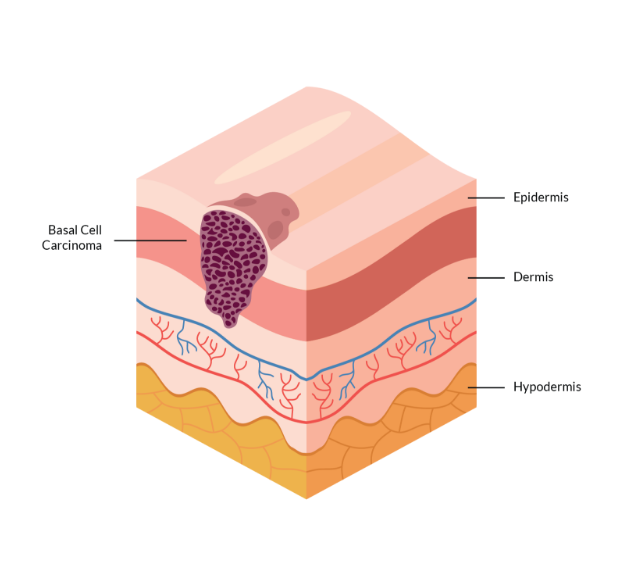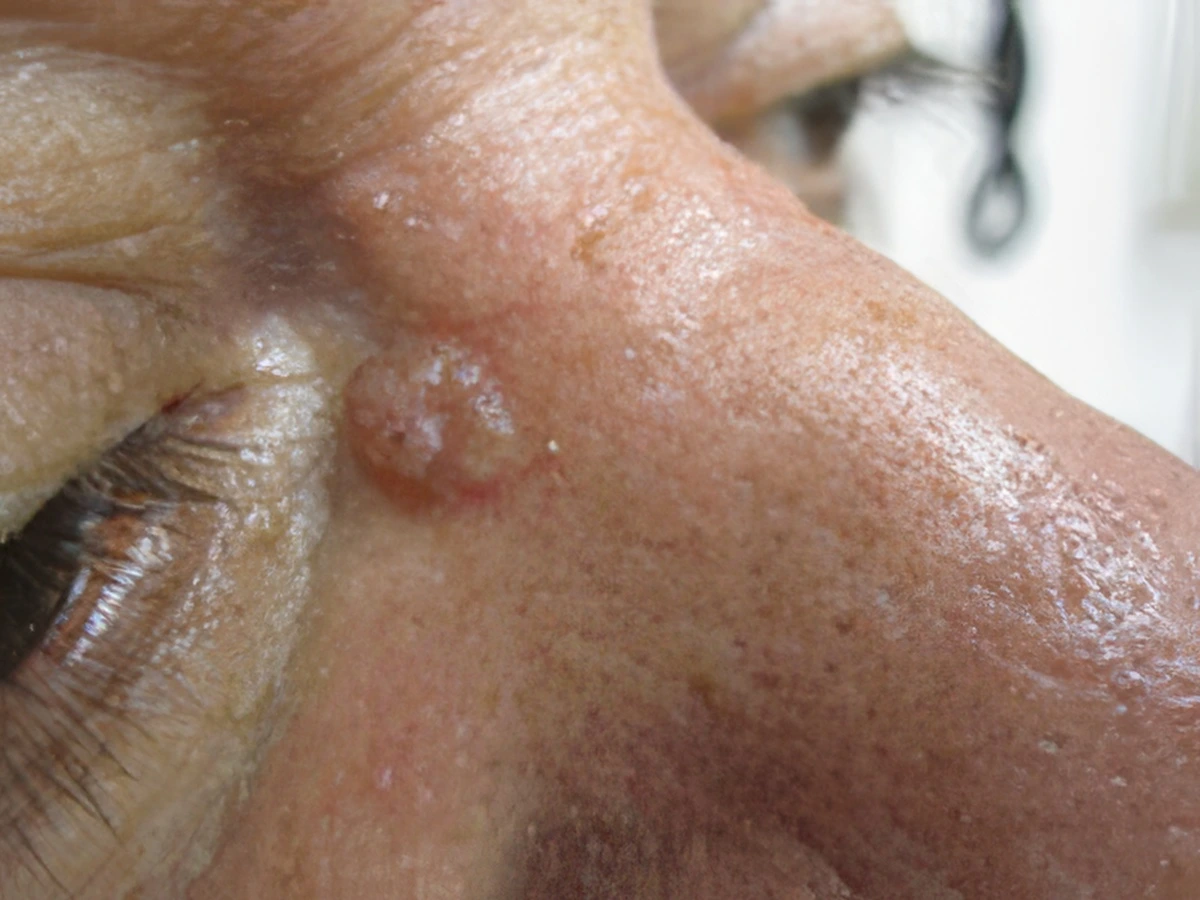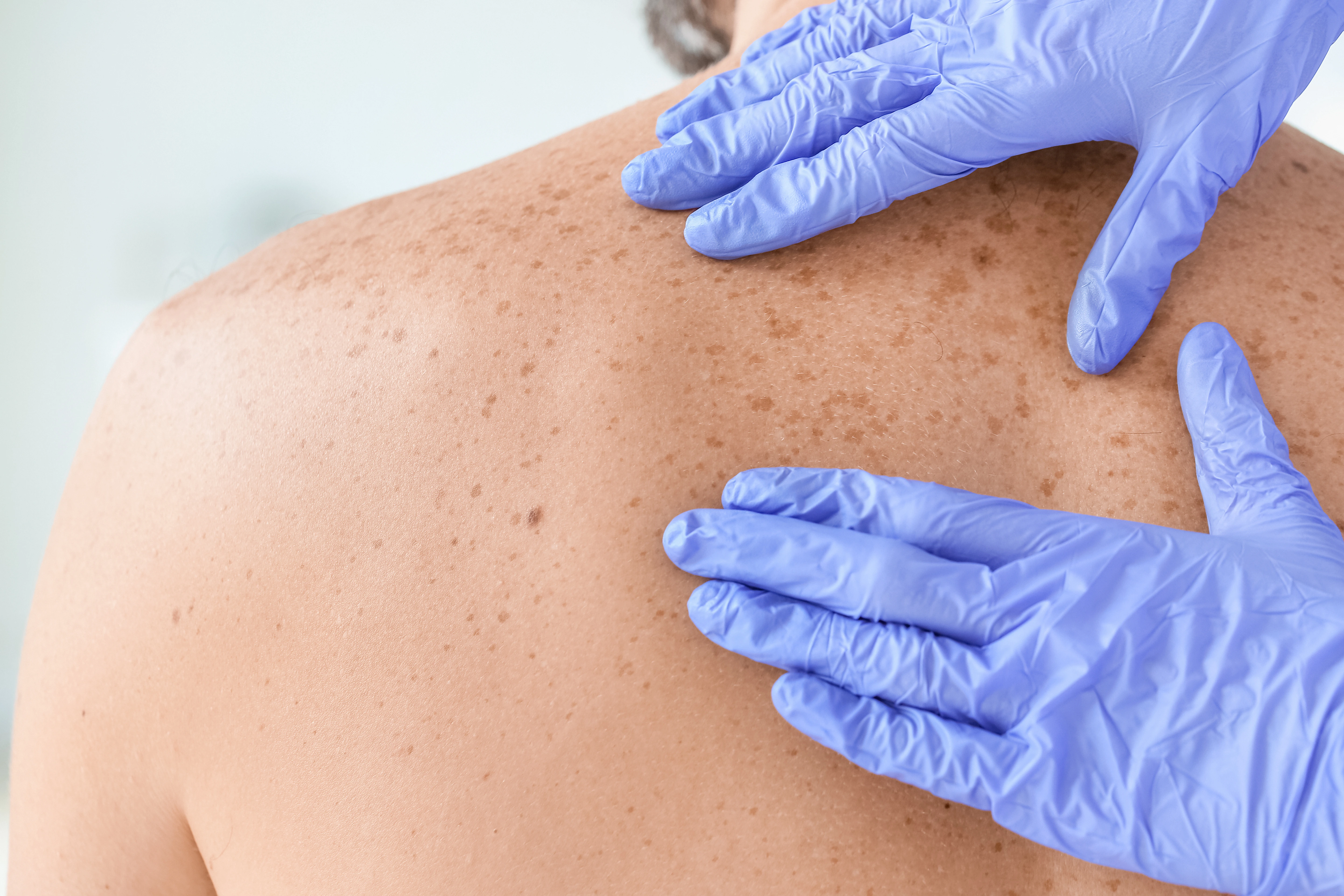A pearly or waxy bump, often with tiny blood vessels
Flat, pink, or brown patches with a scaly edge
Persistent sores that bleed, crust, or don’t heal
Scar-like patches that appear shiny or tight
Basal cell carcinoma (BCC) is the most frequently diagnosed form of non‑melanoma skin cancer. It grows slowly and is highly treatable when caught early.

Basal cell carcinoma forms in the outer layer of the skin and often appears as a shiny bump, pearly patch, or sore that doesn’t heal. Triggered primarily by sun exposure, especially with sunburns and tanning bed use, it’s highly treatable when caught early. Though it grows slowly and rarely spreads, early detection and treatment are essential to avoid deeper tissue damage.
A pearly or waxy bump, often with tiny blood vessels
Flat, pink, or brown patches with a scaly edge
Persistent sores that bleed, crust, or don’t heal
Scar-like patches that appear shiny or tight
Basal Cell Carcinoma is most often caused by UV damage from too much sunlight or tanning beds. Over time, UV rays can damage your skin’s DNA, causing basal cells to divide abnormally and form lumps and lesions. Other risk factors include:
Fair skin
Older age
A history of skin cancer
Excessive sun exposure without protection


A thorough skin exam by a healthcare provider will help identify suspicious lumps or lesions. If basal cell carcinoma is suspected, your healthcare provider may perform a biopsy to remove a small tissue sample for analysis under a microscope. This can confirm the diagnosis and help inform the best treatment approach.
A number of treatment options exist for BCC, including:
Excisional Surgery or Mohs: Removal of the cancerous lump or lesion with a scalpel along with a margin of healthy skin.
Radiant Aura: A scar-free treatment that uses low-energy radiation to target BCC, ideal for patients seeking non-surgical treatment.
Basal cell carcinoma is the most common type of skin cancer. It starts in the outer layer of the skin and usually appears as a shiny bump, patch, or sore that doesn’t heal. It grows slowly and is highly treatable when caught early.
Basal cell carcinoma often shows up on sun-exposed areas like the face, scalp, ears, and arms. Signs include pearly bumps with visible blood vessels, flat pink or brown patches with a scaly edge, or sores that bleed, crust, or don’t heal.
Treatment depends on the size and location of the cancer. Common options include surgical removal, Mohs surgery, or non-surgical therapies like low-energy radiation with Radiant Aura. Our team can recommend the best option to remove the cancer while preserving healthy skin.
Anyone can develop basal cell carcinoma, but it’s more common in people with fair skin, a history of sunburns, or frequent sun exposure without protection. Risk also increases with age and if you’ve had skin cancer before.
Yes, basal cell carcinoma can return, either in the same spot or elsewhere on the skin. Regular skin checks and sun protection are important to lower your risk and catch any new cancers early.